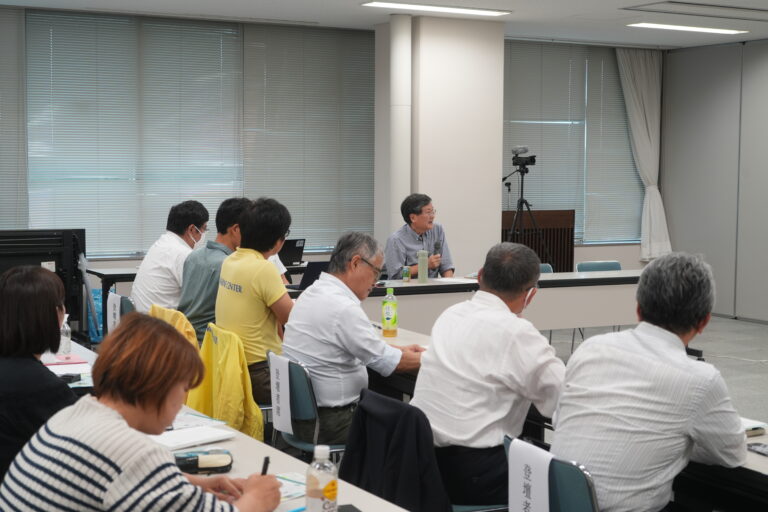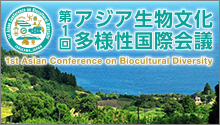The ‘Noto GIAHS Biodiversity Practical Workshop’ took place on Thursday, 16 October 2025 at Noto Airport in Wajima City. This event was hosted by the Noto Region GIAHS Promotion Council’s Noto GIAHS Biodiversity Working Group, and co-hosted by the United Nations University Institute for the Advanced Study of Sustainability Operating Unit Ishikawa/Kanazawa (UNU-IAS OUIK).
This workshop aimed to share information on the current state of Noto’s natural environment in the aftermath of the 2024 earthquake and heavy rain. Through reports and discussions by researchers and practitioners, we collectively envisioned Noto’s future. Together, we explored how to protect and restore the rich natural environment and traditional livelihoods of Satoyama and Satoumi during this challenging period.
Thinking about Noto’s future from global and Japanese trends
As a keynote speech, Dr. Tsunao Watanabe (UNU-IAS OUIK, Visiting Research Fellow) delivered a lecture titled “The Future of Biodiversity in Noto GIAHS: Considerations from Global and Japanese Trends.”
He introduced the policy trends since the adoption of the Convention on Biological Diversity in 1992 and how Japan’s concept of “living in harmony with nature” developed into a global goal. He emphasized the important role Noto played in launching the Satoyama Initiative, which aims to restore the balance between humans and nature by gathering wisdom from around the world. He also introduced the “Green Reconstruction” promoted after the Great East Japan Earthquake and the ECO-DRR (Ecosystem-based Disaster Risk Reduction) initiative which utilizes the power of ecosystems, providing inspiration for Noto’s creative reconstruction.
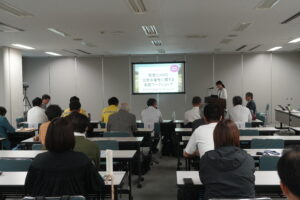
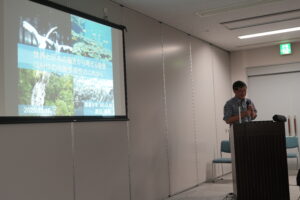
Satoyama and Satoumi after the earthquake: Extensive damage and recovery challenges
In addition to the keynote speech, this workshop consisted of sessions on three themes: ‘Satoyama’, ‘Satokawa and Satoumi’, and ‘crested ibis’.
Session 1: ‘Satoyama Research and Practice’, Prof. Seiji Yanai (Ishikawa Prefectural University) reported on the current state of disaster-ravaged mountainous areas and challenges for restoration. He reported on the extensive damage caused by the Noto Peninsula Earthquake, which resulted in landslides at around 6,000 locations, with a total affected area exceeding 12 square kilometers. He emphasized that, for satoyama restoration, it is essential to consider “what kind of forest to restore and by what methods.” Dr. Koji Ito (Gifu University) reported on the impact of landslides and heavy rainfall on the habitat of an endangered plant in the lily family, Lilium medeoloides var. sadoinsulare, and discussed the potential for recovery through local Satoyama conservation activities. Mr. Ryo Yamamoto (Notofukkolabo) presented the practical implementation of a sustainable forest management approach – to address the issue of abandoned and degraded forests. He stated that local residents’ involvement with the forest can enhance the region’s disaster response capabilities.
Session 2: Satokawa and Satoumi research and practice focused on impacts on coastal environments and river biodiversity. Mr. Akinori Nakamura (Nanao High School) presented findings from the high school student network’s (KOKO-Ishikawa) environmental DNA-based survey of the river fish fauna. He reported widespread distribution of loaches, a key food source for the crested ibis, and confirmed the expanding distribution of invasive species. Mr. Takahiko Ikemori (Ishikawa Prefecture Fisheries Research Center) analyzed the decline in edible seaweed harvests due to land uplift (up to 4 m). He pointed out that, in addition to the deterioration of the seabed environment and the loss of fishing grounds, human factors such as the destruction of fishermen’s livelihoods have also had a significant impact. Mr. Yukimasa Higashide (Noto Marine Center) presented the results of surveys of flora and fauna in the intertidal zone. The surveys indicated that organisms in the upper intertidal zone had almost been wiped out, while species capable of producing the next generation within a short period were showing signs of recovery in the new intertidal zone. Dr. Hiroaki Arakawa (Noto Marine Center) pointed out that ground uplift lowered the river’s water level, thereby altering the brackish water environment where river and seawater mix. This change may have made it harder for rare freshwater fish to survive. He also reported that habitat connectivity is likely to be lost in some areas, making it harder for migratory fish species such as the Japanese three-spined stickleback (Gasterosteus nipponicus) to move freely between rivers and the sea.
The path towards a future of coexistence with Japanese crested ibis
Session 3: ‘Introduction to Japanese crested ibis-related initiatives’, activities in preparation for the planned release of the crested ibis in Ishikawa Prefecture in 2025 were presented. Dr. Koji Ito (Gifu University) presented a report on a study tour in Sado Island, which is designated as a GIAHS (Globally Important Agricultural Heritage Systems) site. He noted that the success of the crested Ibis-certified rice programme in Sado depended on collaboration between the government and the Japan Agricultural Cooperatives (JA) and emphasized the importance of education and human resource development. He also observed that, in Noto, the timing of disaster recovery efforts coincides with the planned release of crested ibises, highlighting the importance of advancing both initiatives simultaneously. Mr. Tatsuya Nogami (Ishikawa Prefecture Natural Environment Division) reported that Japanese crested ibis are scheduled for release near the Ochigata in Hakui City around June 2026. He also provided an update on the preparation of feeding grounds for the crested ibis and public awareness activities, including the Crested Ibis Certification Test for children. Drawing on his experience of monitoring the released ibises on Sado, Dr. Yusuke Ueno (Ishikawa Prefectural University, formerly Niigata University) argued that the should not be treated merely as an environmental conservation initiative, but rather as a symbol that brings pride and hope for the future to the region and lead to its revitalization. To this end, he emphasized the importance of scientific research, civic activities and collaboration between industry, academia, government and the community through initiatives such as the Noto Peninsula Green Infrastructure Restoration Study Group. Dr. Daisuke Utsunomiya (Suzu City Office for Living in Harmony with Nature) introduced the Awazu area of Suzu City, which has been visited by crested ibises since 2010. Residents there have been maintaining biotopes and conducting wildlife surveys for over 10 years.
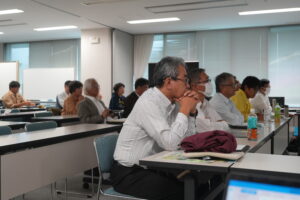
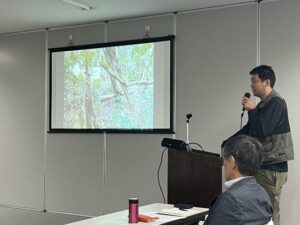
The importance of dialogue and collaboration for creative recovery
During the final plenary discussion, the following points were confirmed as important: the need for a comprehensive reconstruction plan that addresses resources from satoyama to satoumi, and the importance of a perspective that links local livelihoods with biodiversity conservation. Building on Sado’s experience, the importance of constant ‘dialogue forums’ and workshops to change perceptions of the crested ibis as a ‘pest bird’ was emphasized.
Prof. Yanai, the chairman of the working group, expressed his intention to develop the activities of the Noto GIAHS Biodiversity Working Group further, based on the discussions held.
Ms. Sayako Koyama (UNU-IAS OUIK, Researcher) concluded the workshop on behalf of the organizers, expressing the hope that the insights and lessons gained would empower us to preserve Noto’s way of life and its rich natural environment for future generations, and enable us to work together to recover from disasters.


